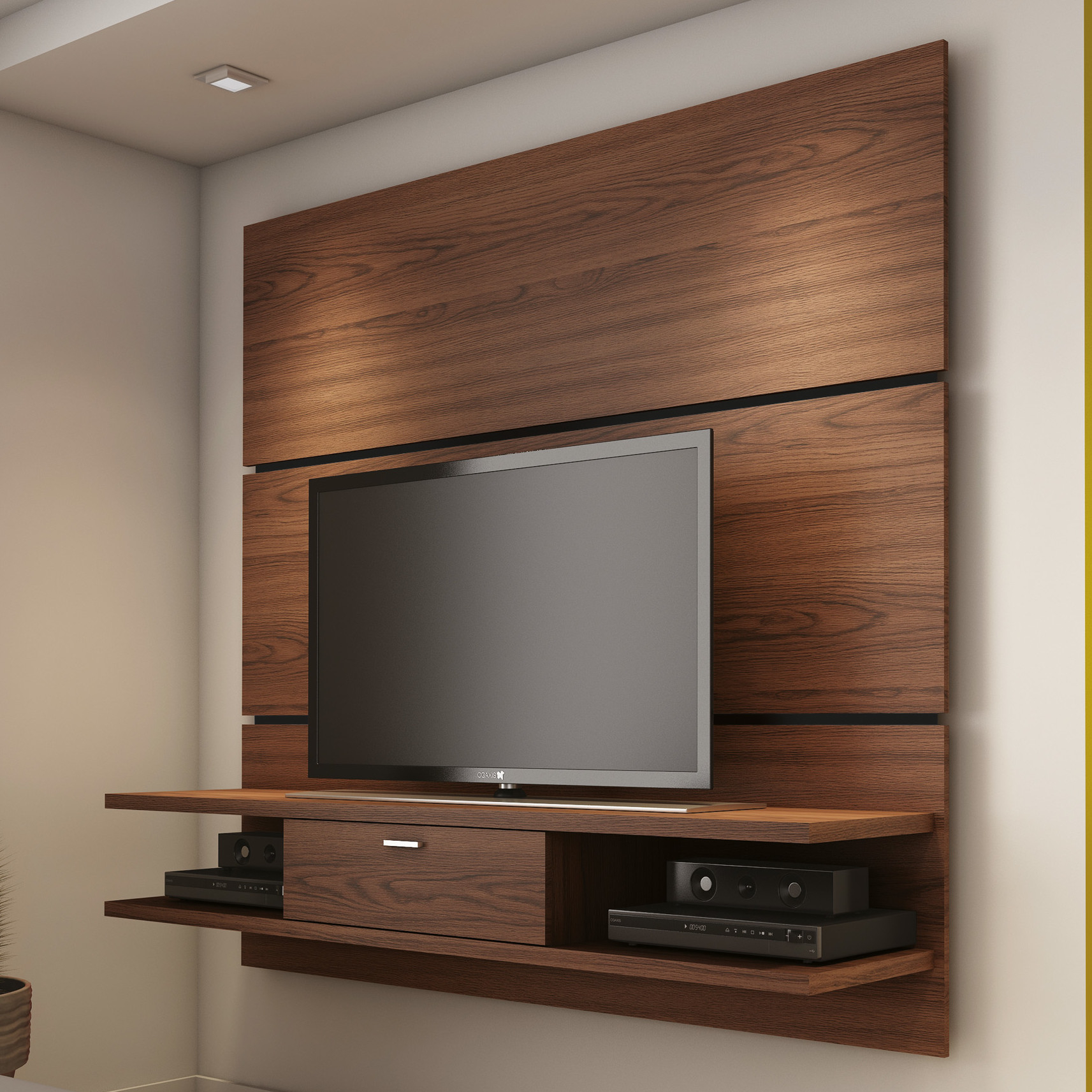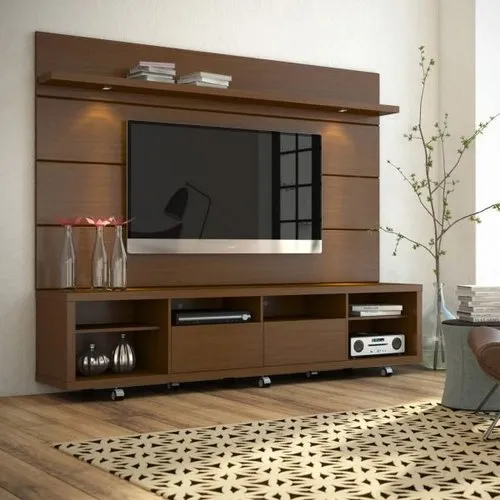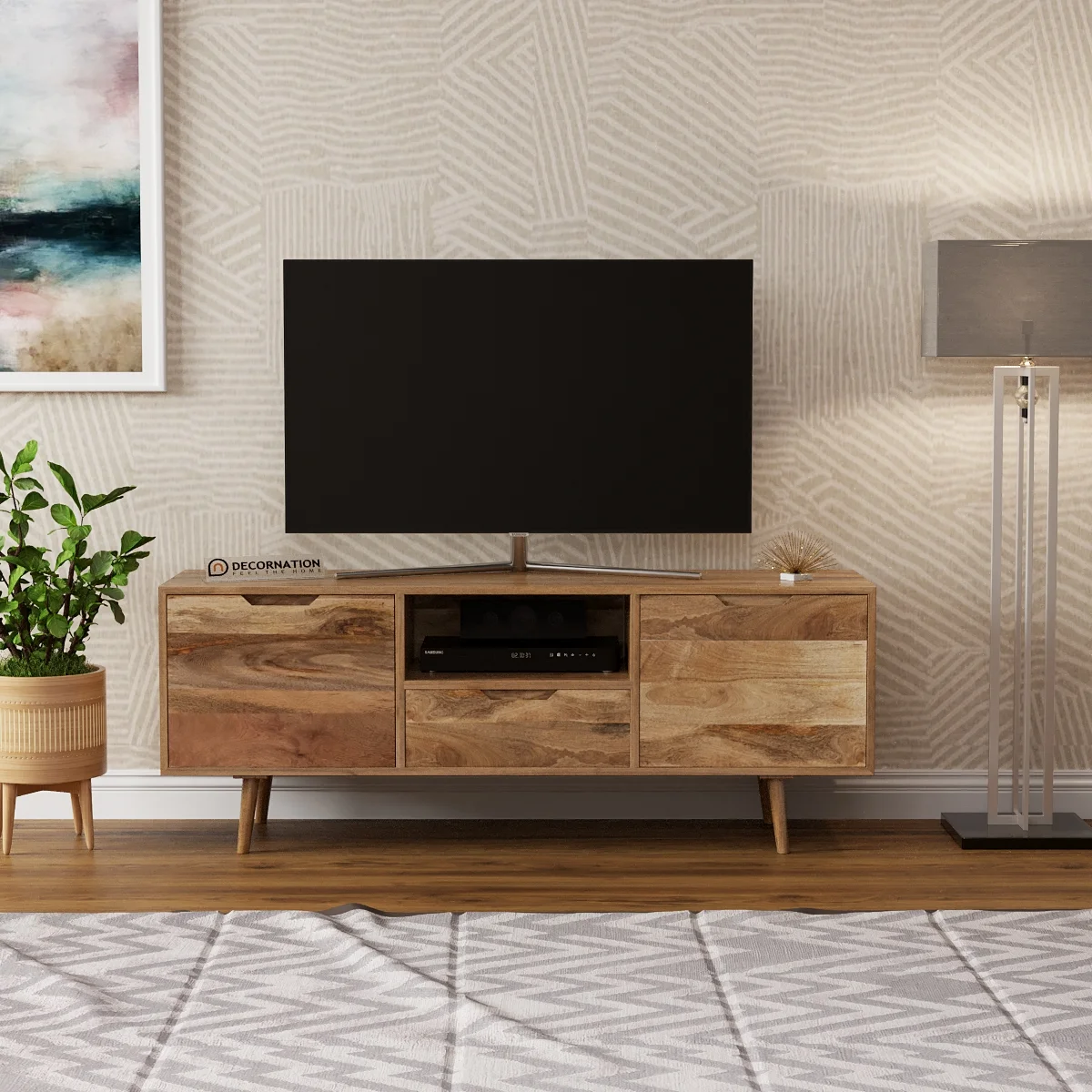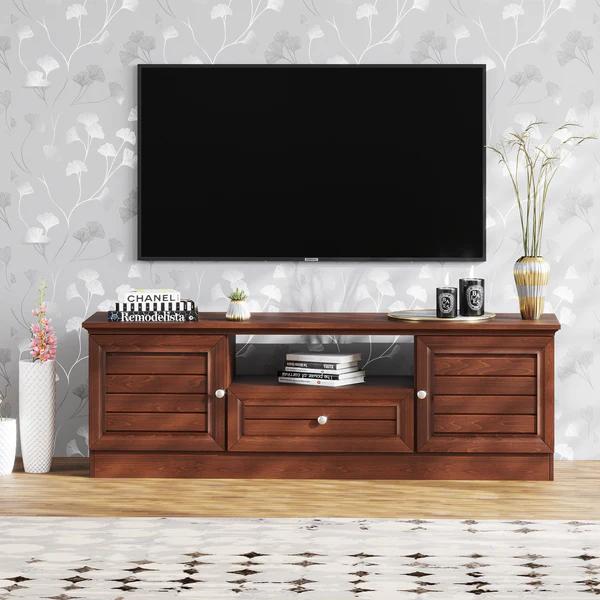Wooden TV Cabinet

Cabinets, those graceful sanctuaries of storage, have transcended their utilitarian role to become integral elements of interior solutions. Among these, the wooden TV cabinet emerges as a centerpiece, not just for its functionality but also for its ability to add a touch of elegance and organization to bedrooms and living rooms. Wooden TV cabinets stand as elegant indoor solutions, seamlessly merging the functional need for storage with the aesthetic desire for grace. These cabinets, specifically designed for holding televisions, elevate the decor of living spaces while providing concealed storage. Positioned strategically in living rooms, wooden TV cabinets function not just as storage units but as stylish centerpieces. Their designs are tailored to complement cutting-edge electronics, creating a harmonious blend of technology and aesthetics. Diving into the treasure trove of Indian handwork, wooden TV cabinets showcase the artistry of master craftsmen. Each cabinet is a testament to the rich tradition of craftsmanship, where skillful hands transform wood into a functional and artistic piece. TV cabinets fashioned out of wood bring a cleared and streamlined decoration of beauty and luxury to living spaces. The natural warmth and texture of wood contribute to an ambiance of sophistication, making the cabinet not just a functional item but a visual delight. Wooden TV cabinets diversify true elegance in their design and finish. These cabinets go beyond mere functionality, displaying the colors of excellent workmanship. The intricate details and finishes add layers of visual appeal, turning the cabinet into a focal point of the room.



